Come preparare un access point per l'esterno
Viste le numerose richieste, dovendo preparare un access point da abbinare in una postazione già attiva, ho fatto alcune foto, tanto per far vedere come risulti estremamente semplice progettare e costruire un qualcosa che può essere messo su un palo, utile ad accedere alle reti wi-fi.
Si tratta di assemblare un apparato qualsiasi, nel mio caso il famoso linksys WRT54G in una scatola elettrica da esterni, stagna, ed accoppiarlo ad una antenna a pannello da 6 dB circa. Mi sono subito recato a prendere i materiali, tra cui una scatola Gewiss 44ce, siglata come gw44208 (misura 240X190x90) e tre staffe ad U.
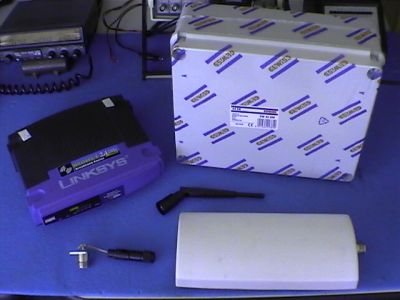
Ho dapprima verificato come posizionare l’apparato dentro, in relazione al materiale che dovevo installare e, soprattutto, in relazione all’antenna da installare e alla lunghezza del cavo rf per alimentarla. Ricordo che più è corto il cavo rf, meglio è, per non perdere molta radiofrequenza in uscita, e per non lasciare libero cavo rf, facilmente oggetto di interferenze dall’esterno (magari, da altri access point installati in zona….).
Trovata la giusta disposizione, ho praticato prima i due fori per la staffa da palo, sul fondo della scatola (rispettando appunto l’orientamento e la polarizzazione dell’antenna stessa). Poi ho praticato i due fori, quello del connettore d’antenna e quello relativo al passaggio del cavo ethernet per il collegamento al computer e alla alimentazione.
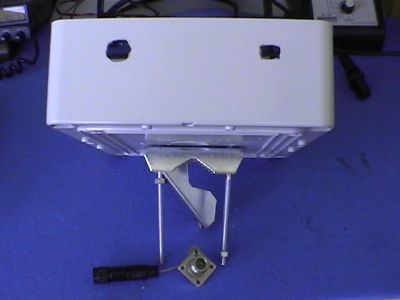
Nel mio caso, ho preso l’antenna originale del linksys, ho tagliato la plastica esterna, ed ho recuperato il connettore originale, collegato ad uno spezzone di cavo rf originale non molto lungo, alla cui estremità ho saldato un connettore N da pannello. In questo modo, ho addossato l’antenna direttamente alla scatola, e collegarla direttamente al connettore da pannello messo.
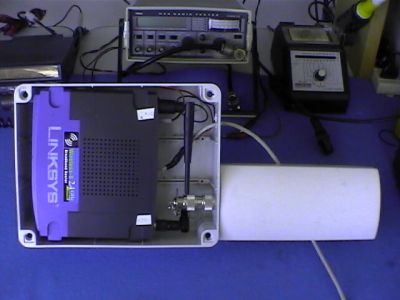
Altre due foto, per far vedere il particolare del connettore d’antenna e l’alimentazione 12 volt attraverso lo stesso cavo ethernet, utilizzando il solito “power over ethernet”, con le due coppie inutilizzate del cavo originale.
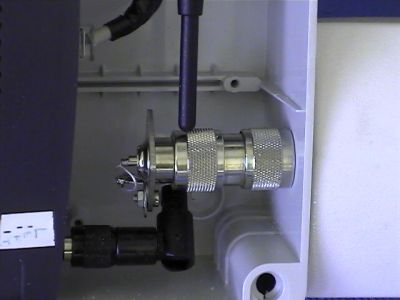
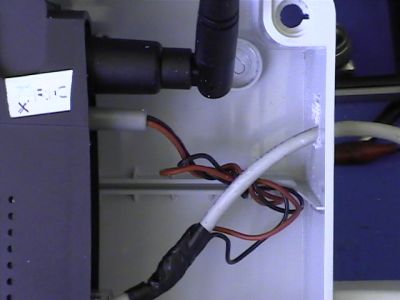
Per finire, l’installazione, ho inzeppato con materiale di riempimento, per evitare movimenti non voluti, utilizzando quella plastica a bolle per imballaggi, siliconato i due fori di uscita, ed anche quelli relativi alla staffa, per evitare rientri di acqua, e volutamente lasciata aperta sulla scatola, sul lato che risulta più basso, una piccola apertura, che permetterà l’eventuale scarico della condensa per gravità. Ecco il risultato, in poco più di venti minuti, tra buchi con il trapano e via dicendo.
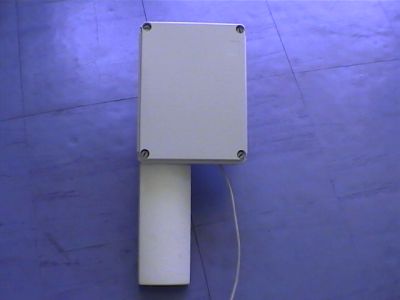
A presto, buoni smanettamenti, Luca.(ik0yyy)








